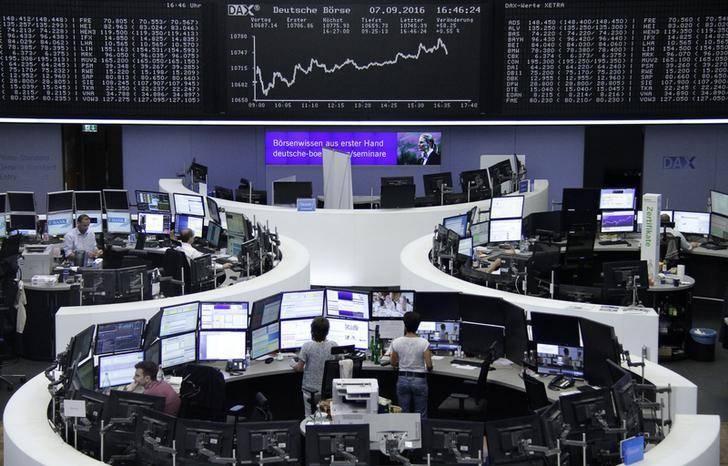3 market scenarios based on Fed’s next move
3 market scenarios based on Fed’s next move : Hike or no hike? Pop or drop for financial markets?
The Federal Reserve will answer the first question when it announces its decision on interest rates Sept. 21 — an event with such import for investors that one Wall Street pro dubbed it “Super Wednesday.”
Whether stocks, bonds, commodities and the dollar soar or swoon depends on two things: what the Fed does and says; and how that jibes with Wall Street’s expectations and market bet — both which aggressively lean towards a no-rate-hike decision.
The Fed hasn’t raised short-term borrowing costs — currently pegged at 0.25% to 0.50% — once this year. And heading into Fed decision day Wall Street expects the Fed to stand firm again, although they expect the Janet Yellen-led Fed to leave “smoke signals” about a possible hike at their December meeting after the presidential election.
Financial markets have turned volatile in the past week ahead of the Fed’s decision.
So where are markets headed next? The three market scenarios below offer a roadmap.
Scenario 1 (Odds 10%-15%)
Decision:Fed hikes
Reaction: Market tanks
A Fed hike is the most bearish outcome, as investors don’t think a hike is coming and money managers haven’t positioned their portfolios for one. A September rate increase would be a “big shock,” “a very rude surprise” and “a mistake,” market pros say.
If the Fed suddenly changed its stripes, it would signal a sharp departure, says Luke Bartholomew, investment manager at UK-based Aberdeen Asset Management.
“Investors would have to reconsider their views of the Fed’s predictability and transparency,” he told USA TODAY. Investors would start to wonder, “How hawkish are they? Who are the real Fed leaders? Who do you listen to?”
Stocks would likely suffer steep declines, as would pricey U.S. government bonds, sending both short- and long-term yields up sharply. The dollar would surge, dragging down oil and other commodities.
The decline for U.S. stocks could be severe, perhaps even steeper than the 400-point slide the Dow Jones industrial average suffered Friday, Sept. 9, when Boston Fed president Eric Rosengren spooked markets when he said “a reasonable case can be made” for a hike, putting a September rate increase back on the table, says Bartholomew.
The decline could also mimic the selloff after the Fed’s first rate hike in nearly a decade back in December 2015, when the Dow tumbled nearly 12% in a two-month span, warns Phil Blancato, CEO of Ladenburg Thalmann Asset Management.
It’s similar to last time the Fed hiked, says Blancato, as the Fed is again threatening to tighten into a not-so-great economy.
“It could look a lot like December, when markets got hammered,” says Blancato, who thinks a surprise hike could cause a 10% stock pullback. “It’s the exact same scenario.”
Given that stock prices are high and corporate earnings growth has been less than robust puts stocks in a vulnerable position, adds Bill Northey, chief investment officer of the Private Client Group at U.S. Bank. “In that environment having the Fed tapping on the brakes will not result in a positive equity response,” he says.
Scenario 2: (Odds 70%-80%)
Decision:Fed stands pat; keeps December hike on table
Reaction:Market calm prevails
This is the base-case and, therefore, will have the least dramatic impact on financial assets, as this outcome is fairly well priced in, says Matt Lloyd, chief investment strategist at Advisors Asset Management.
“I don’t think you will see much reaction,” he says.
Under this scenario, the market focus will quickly shift to Yellen’s press conference after the release of the Fed statement. Investors will want to see how the Fed sees economic growth, inflation expectations and the pace of future rate hikes playing out. If the Fed leans toward caution, markets might take that as a risk-on signal and buy stocks and bonds. In contrast, if the Fed hints strongly that a rate hike is coming at year end and more are on the way, market volatility could ramp back up, analysts say.
Still, the fact that the Fed is pushing out the next hike for three months will calm investors’ frayed nerves, adds Northey.
Scenario 3: (Odds 10%-15%)
Decision:Fed stands pat; signals December off table
Reaction:Market rallies
The most bullish scenario for stocks and bonds is if the Fed takes the threat of rate hike off the table for 2016 and perhaps longer, says Dan North, chief economist at Euler Hermes North America.
“If they put any softening language in the statement that signals a December hike is unlikely, the markets would probably like that,” says North.
In this scenario, the Fed basically lowers its outlook for economic growth and inflation and reduces the number of rate hikes it sees in 2017 and 2018.
Source : http://www.usatoday.com/story/money/markets/2016/09/19/stocks-fed-scenarios/90504900/

